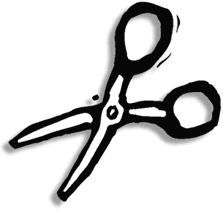|
|
|


|
|

|
Squeezing Vendors:
Get the most from suppliers
At the grocery
store, it's how you choose the most delicious fruit.
Why not apply the same method to secure the best possible
terms from your vendors? Squeeze 'em!
1) Secure volume discounts Determine
who you spend the most money with and make
sure they know about it. To find out, print
the Vendor Last A/P report. Then contact them
to negotiate a volume discount. Or consider
using other vendors more often than in the
past.
2) Always use POs POs remember what
was agreed to -- both about dollars and scope
of work. They are your backup should you need
to deal with situations that are outside the
originally agreed-to work.
3) Determine when it pays to take vendors'
early payment discounts A rule of thumb
is to take a discount if you could not invest
the money and earn more than you'd save. For
example, 2/10, net 30 terms equal 36.73% a
year! If you can't beat that with an investment,
take the discount!
4) Pay vendor invoices when due Unless
it pays to take a discount, pay vendors only
when invoices are due. And know the ones to
call for an extension (with no interest charged)
should you get into a bind. Take advantage
of the "weekend float". Send checks out on
Friday. This keeps your money in your account
a little longer (and earning more interest,
right?)
5) Place vendor on hold If situations
warrant, place vendors on hold. (Each vendor's
file has an "on hold" checkbox.) New POs or
invoices can't be added for a vendor who's
on hold. Include a user-defined reason why
the vendor is on hold, as well. |
|
By
Elaine Hilmer
In today's business environment, an entrepreneur is most likely to succeed
when using a budget to measure business performance. A budget forecasts
cash flow -- how money will move through your business -- and is the
dollars-and-cents implementation of your business plan. A budget is your
key to success.
When setting up your budget, it's important to be realistic (perhaps
even a little pessimistic) and consistent. Once your budget is set up,
don't put it away! Budgeting is an ongoing process and the budget should
be reviewed and revised regularly. Regular attention will spotlight any
upcoming shortages so you can prepare for them.
As a practical tool, your budget must be realistic and easy to use. There
are many methods for creating a budget, so choose one that you're comfortable
with. The simplest method is the top-down approach using last year's
actual figures and adding a percentage. As you review your budget, update
each expense to allow for changes.
|
|
Budgeting for large
capital items is crucial. Capital spending, if not controlled,
can have a debilitating effect on cash flow. To assess the viability
of a project, express it in financial terms based on how much
revenue it will produce or the expense it will replace. Consider
the benefits and risks of the expenditure, allowing for any additional
expenses it might generate. Also, if you use short-term financing,
include the cost of financing in your outflows, and be sure to
include sales and income tax payments.
When you drop your actual figures into the budget you get a projection
of the year's results immediately. By benchmarking your predicted cash
flow against actual agency performance, you'll see how money is moving
through your business. Managing your cash flow with budgets is a powerful
tool, and you'll be amazed at the level of comfort you get when you know
what you're dealing with.
Elaine
Hilmer is a Clients & Profits consultant. She can be reached
at (212) 868-3232. |

|
|
|
|